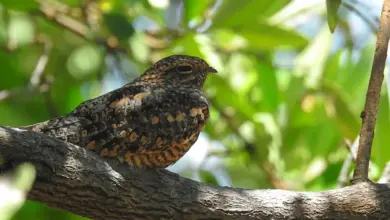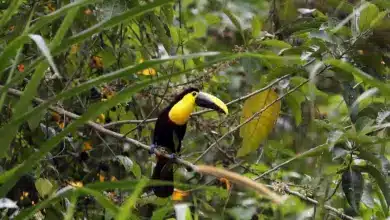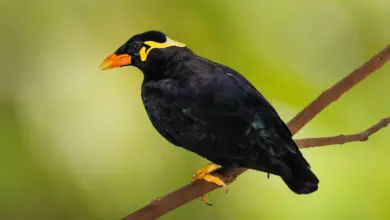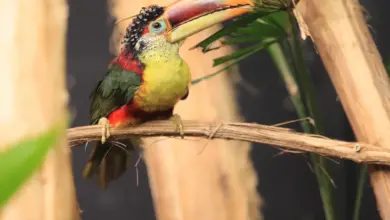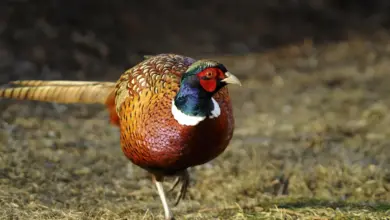The Chestnut-eared Aracaris (Pteroglossus castanotis) is an Aracari that is native to central and south-eastern South America, where this lowland species inhabits western Brazil north to eastern Colombia and south through eastern Peru, northern and eastern Bolivia, and northern Argentina.
Aracaris generally roost socially throughout the year. Up to five adults and their fledged offspring sleep in the same hole with their long tails folded over their backs.
It has the widest distribution of any aracari species and is one of the most common toucan species.
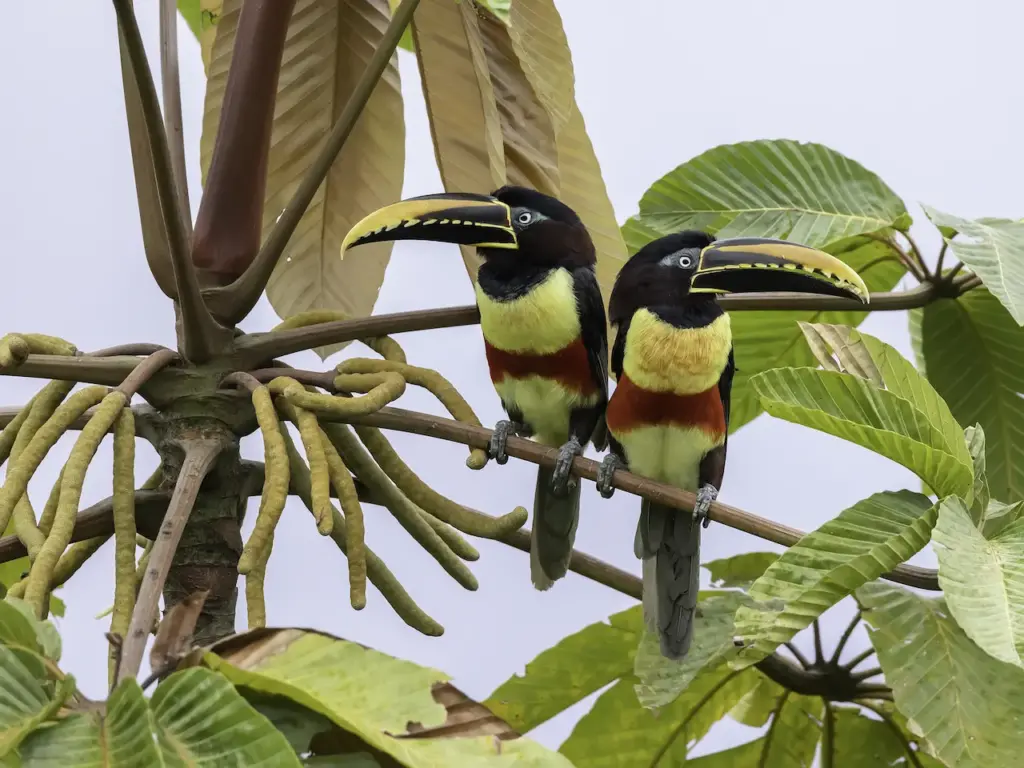
Description
The Chestnut-eared Aracari has yellow underparts, with a single red band across the chest. The head is black; the throat, ear coverts (feathers covering the ears), and collar are chestnut brown but appear black at a distance. It has a red rump.
The bill is mostly dark-brown or black with a yellow tip and stripe along the bottom of the upper bill. The irises are white or yellow. The bare skin around the eyes varies from dark turquoise to grey.
Similar Species: The Chestnut-eared Aracari resembles the Black-necked Aracari (P. aracari), except that the Chestnut-eared Aracari is larger and more colorful. The Black-necked Aracari has olive-colored thighs, while the Chestnut-eared Aracari’s are brown.
Breeding / Reproduction
They typically nest in trees with appropriate hollows, most of which were previously made by woodpeckers. Other hollows are the result of a branch break and ensuing rotting of the heartwood from rain over some time.
Both the male and female share the incubation and chick-rearing duties.
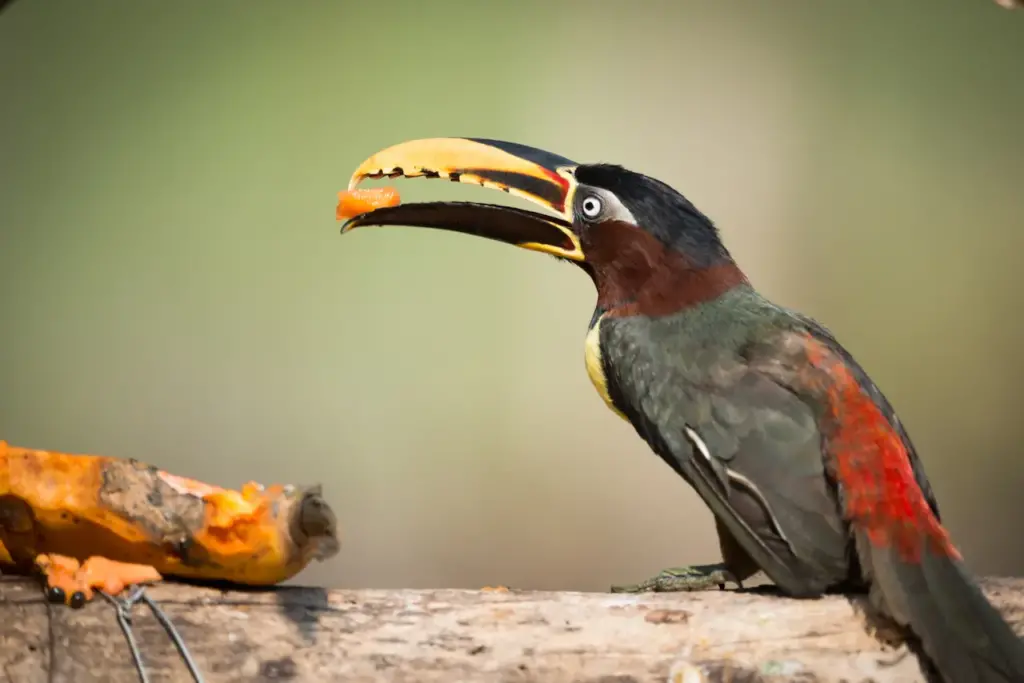
Their eggs are white and elliptical-shaped. The eggs are incubated for about 16 days. The newly hatched chicks are blind and naked with short bills and thick pads on their heels to protect them from the rough floor of the nest. Both parents, as well as their previous offspring and/or possibly other adults, feed the chicks.
The young fledge after about 6 weeks. The adults continue to feed them for several weeks after fledging.
In captivity, their nests are typically constructed from palm tree logs or nesting boxes.
Captive Breeding of Toucans, Toucanets and Aracaris
Natural and Captive Diet of Toucans / Toucanets and Aracaris
Taxonomy
The Chestnut-eared Araçari forms a superspecies with the Black-necked Aracari (Pteroglossus aracari).
Two subspecies are recognized:
Chestnut-eared Araçari – Nominate species – Pteroglossus castanets castanets – Gould, 1834)
Range: Southeast Colombia and Western Brazil, South to Southeast Peru and, in Brazil, South Amazonas extending E to R Madeira)
Pteroglossus castanotis australis – Cassin, 1867
Range: North-central Brazil south of Amazon, east to Parintins, and south to northeast and east Bolivia, east Paraguay, northeast Argentina (Misiones), and southeast Brazil
